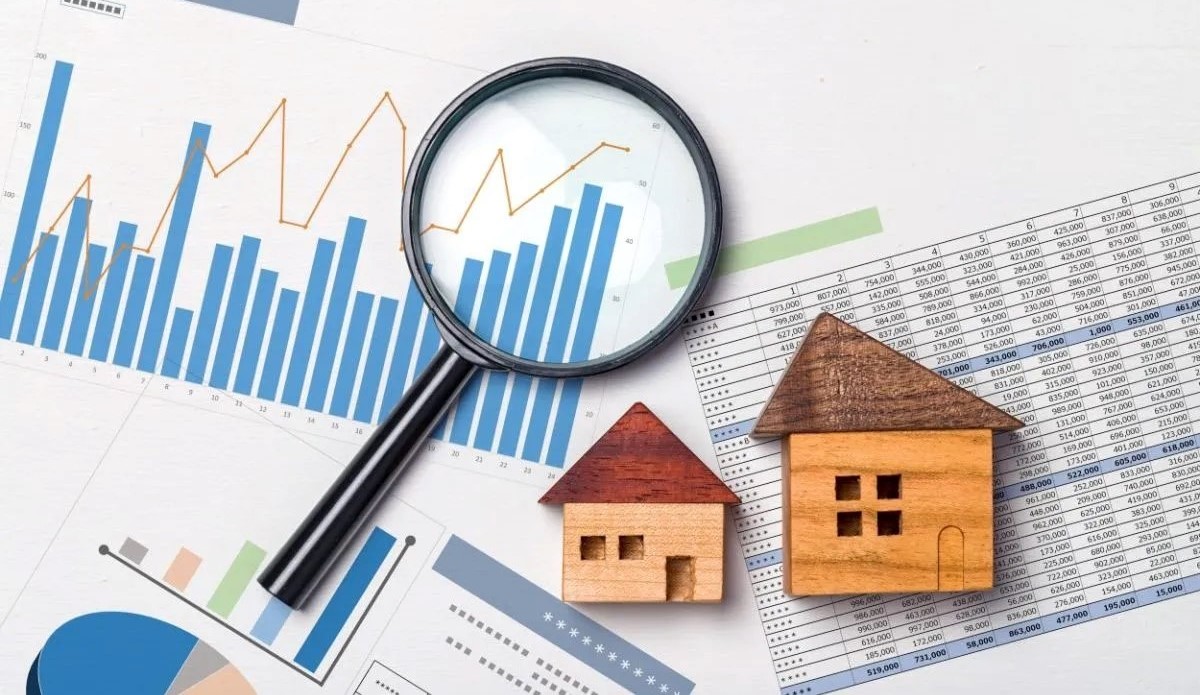When it comes to your housing options, maybe you’re finding yourself on a Goldilocks quest: renting is not enough, but homeownership is too much.
Could a rent-to-own agreement be just right?
To be sure, it’s a less-traveled path. Just 1% of homebuyers purchase the home they previously rented, according to a 2024 report from the National Association of Realtors. (That figure doesn’t capture renters who ultimately walk away from a rent-to-own situation — more on that later.)
You may be asking, “What should I know about rent-to-own homes?” To find out, we talked to experts like Rick Fuller, a real estate agent in the San Francisco Bay Area, Eric Dunn, director of litigation at the National Housing Law Project, and Robert A. Miller, a real estate attorney based in Prescott, Arizona.
This primer will tell you what you should know about rent-to-own homes: the good, the bad, and the ugly.
Work With a Top Agent to Find a Rent-to-Own Home
When considering a rent-to-own home, working with a real estate agent experienced in these types of deals can help you navigate the process and find a great deal.
What is a rent-to-own home?
With a rent-to-own agreement, you make an agreement with the seller that they will either sell you their house or offer you the option to buy after a certain period of time (usually within one to three years).
Once the agreement term concludes, you pay a down payment, secure a mortgage, and transition from tenant to owner. The rent payments you made may reduce your purchase price, contributing to your down payment, and lowering your total mortgage loan.
Fuller, who has 21 years of experience, shares a rent-to-own buyer success story. His team represented a seller who rented a Brentwood, California, house to a tenant interested in eventually buying the property. Over five years, the tenant paid a couple extra hundred dollars a month over her monthly rent, eventually taking the option to buy and contributing more than $10,000 to her down payment.
“The nice thing was … this particular buyer bought the property with this option, and they bought it with a price tag of five years ago,” Fuller says. “This really works in an escalating, rising market for a buyer.”
Understanding your options: lease option or lease purchase
To get the agreement that works best for you, it’s important you work closely with an experienced real estate agent. While your exact arrangement will be unique to your situation and the seller’s, it may fall into one of two types: lease option or lease purchase.
Lease option
This path is similar to a standard rental lease. The big difference is, you pay an option fee to purchase the home at a later date. This option fee locks the sales price, but you’ll still owe a down payment at the time of purchase.
Lease purchase
If you opt for a lease-purchase agreement, part of your rent will typically go toward your eventual down payment (some lease options have this feature as well). This means you are likely trading a higher monthly rent for a lower down payment at the end of the term. Once your contract ends, you are obligated to buy the property.
How does rent-to-own work? 7 important things to know
1. Option fee
If you opt for the lease option route, the seller may ask you to pay what’s called an option fee (also known as premium payment or option consideration). It’s typically between 2.5% and 7% of the agreed-upon purchase price, and it locks your sales purchase price. You can negotiate whether the fee counts toward your down payment.
The money usually isn’t refundable, so if you default on the contract’s terms, or choose not to purchase the house, the homeowner can keep it.
2. Purchase price
When you sign a contract with the current homeowner, you’ll agree to the future purchase price. Here’s where working with an experienced real estate team comes in handy. “For a tenant, knowing the trajectory of the real estate market is important,” Fuller says. “If you secure an option and identify a purchase price, and the market declines, then nobody is going to exercise that option to buy a home above what market value is or even above what the property would appraise for.”
“Working with a real estate agent and understanding the local dynamics of that market are imperative for a tenant,” he adds.
3. Rent payments
Just as you would with any rental, you should expect to pay monthly rent payments while you rent to own. Make sure you’re paying your rent on time, every single month. Late payments could jeopardize your contract.
4. Rent credit
In some rent-to-own agreements, part of your rent will go toward your eventual down payment.
5. Maintenance agreement
If you’ve been a renter, you’re used to calling your landlord when something breaks. That might not be an option with a rent-to-own home. Depending on how your contract is written, it may be your responsibility to replace the fridge when it stops running or pay the plumber to fix a leak.
These costs can add up — especially if you decide not to purchase the home.
6. Lease term
The term of your lease, or the time limit, is how long you’ll rent the house before you opt to buy it (or have to, depending on your contract).
7. Closing the sale
Your path here was different, but you’ll still go through that same rite of homeownership: getting a mortgage and closing. You’ve already got the keys in your pocket and your shoes in the closet, but when you close you’ll officially be the homeowner. Make sure you’re prepared to pay the typical closing costs.
Pros and cons of rent-to-own
Deciding to purchase a home is a big life decision; so is deciding to rent-to-own. Here are some pros and cons to weigh.
Pros
For certain aspiring buyers, a rent-to-own arrangement can be a good fit. “If someone finds a property that they’re renting that they would really like to purchase, this can be a good option,” says Fuller.
One reason is because they can lock in a price.
“You can actually secure a price and then buy the home a year, or two years, or even three years later, and the equity that is accumulated over those several years is something the buyer could benefit without actually having ownership of the property,” he says.
It can also be structured to provide you with a “forced savings account,” Fuller says. If saving money is a challenge, you may find it helpful to contribute to your down payment or closing costs as part of your monthly rent payment.
Other advantages include:
- You might get lucky and earn instant equity if your home appreciates above the agreed-upon purchase price.
- Building good credit takes time. If you make financially sound moves, you can improve your credit, and hopefully obtain a mortgage with better interest rates.
- You’ll avoid having to move again — and all the stress and money that goes along with a move.
- You get a chance to test-drive your new house and neighborhood.
- By pursuing a less common option, you can avoid heavy market competition.
Cons
When it comes to rent-to-own arrangements, Dunn, whose career includes 16 years as a legal aid attorney, is wary. “I generally don’t think it’s a good idea,” he says.
He cautions that these arrangements can be predatory, targeting low-income renters and minorities. “It’s really a transaction form that originated as a means of exploiting people of color that couldn’t get access to the types of mainstream financing that’s available to whites, and by and large, that’s what it still is,” he says.
You may be required to maintain the property and make repairs, an extra responsibility and expense many renters want to avoid. Worse, the property might be in bad shape, with the landlord using a rent-to-own setup as a way to avoid having to fix it up themselves, Dunn says.
Other drawbacks may include:
- Your monthly rent could be more than you would pay for a rental.
- If you pay a nonrefundable option fee, you could be out several thousand dollars without even owning a house.
- You expose yourself to market risk if the house doesn’t appreciate as expected.
- Maybe you’ve made 23 on-time rent payments. But if you’re late on rent payment No. 24, it could put the whole deal in jeopardy.
- Should you decide not to purchase the house after all, you risk losing what could be a significant amount of money.
- A rent-to-own situation gives you more time to get your credit and finances in order to qualify for a mortgage. But, if at the end of the term you still don’t qualify, then what?
- Sometimes the unexpected can happen. The house could be foreclosed on if the owner is not making mortgage payments, for example, which puts your arrangement in jeopardy.
Cost example for a rent-to-own agreement
Let’s take a look at a rent-to-own cost example that can give you a better idea of what to expect.
Let’s say you enter a two-year rent-to-own agreement. The option fee is 4% of the home’s $200,000 purchase price, or $8,000, which you’ll pay upfront.
Your monthly rent is set at $1,600, with 20% of each payment ($320 per month) allocated to an escrow account throughout your two-year lease. When it’s time to buy, you’ll subtract the $8,000 option fee and $7,680 in rent credits ($320 over 24 months), lowering the effective purchase price by $15,680, to $184,320.
At that point, you can finance the remaining amount with a mortgage, just like a traditional homebuyer.
Is a rent-to-own arrangement the right move for me?
There’s more than one way to become a homeowner. For certain life situations, a rent-to-own arrangement might make the most sense.
You need time to improve your credit
Most buyers require a mortgage to become homeowners. But if you have poor credit, that can be a significant barrier to getting a mortgage with a solid interest rate.
Renting a home, even just for a year or two, gives you the opportunity to strengthen your credit and qualify for a mortgage.
You’re struggling to save for a down payment
It can be challenging to save up for a down payment. By renting to own, you give yourself more time to build up your bank account. Plus, part of your monthly rent payment may be directed toward your eventual purchase.
You’re working on reducing your debt to buy a home
Lenders might balk at providing a mortgage loan if your debt-to-income ratio (your monthly minimum debt payments divided by your monthly gross income) is too high. While you rent, you can focus on paying down your debt.
You plan to stay in the home for a while
If you found a home and location that will fit your needs for several years to come, a rent-to-own arrangement could pay off for you. Plus, you’ll have peace of mind knowing you won’t have to move.
Miller, who has more than three decades of experience practicing real estate law, has another point of view. Certain rent-to-own arrangements could work out if you’re new to an area and like the house but need some time to decide if you like the neighborhood.
“You tie up the property, but at the same time, you’re not tied up to it,” Miller says.
How do you find a rent-to-own home?
Let’s say you’ve decided to move forward with a rent-to-own approach. Now you need to find the right house.
Fair warning: This could be challenging. “The rent-to-own properties are not well organized,” Fuller says. While prospective buyers can visit plenty of online sites to browse houses for sale, and prospective renters can do the same for rentals, there are not many websites that list rent-to-own opportunities, he says.
Your best bet is to follow these tips.
Work with an experienced agent
An agent who has experience with rent-to-own transactions can be your best advocate through this complex process. Not only can they provide you with real estate knowledge and help you locate opportunities, but they can also help you to understand the terms and conditions that often accompany these types of agreements.
Most of his clients set out looking for a property to rent, Fuller says, then decide they’d like to purchase the property they found once they’ve rebuilt their credit or saved up for a down payment. In his experience, most landlords are receptive to an option agreement.
“When we find the right property, and the right tenant, and the right landlord, a lease-option becomes very possible and can be a win-win for all properties,” Fuller says.
Explore alternate options
Some companies offer rent-to-own programs, an option you can consider to reduce risks like having the homeowner go into foreclosure, or decide not to sell to the tenant at the end of the term. In this scenario, the company purchases the home and leases it to you, as the buyer. Once you’re ready to purchase, you purchase directly from the company.
One example of this type of program is Home Partners of America. Home Partners offers one-year rental leases that can be renewed for up to five years. Renters sign a “right to purchase” agreement, which sets a predetermined price should they decide to purchase the house from Home Partners.
Other programs are available through these rent-to-own platforms:
Approach a seller who’s not having luck with the market
Maybe you or your agent have noticed a house that’s been on the market for a while. Why not ask if the seller is interested in a rent-to-own arrangement? For the seller, the benefit is a monthly income stream. Your agent can approach the seller and make the suggestion.
11 top tips for buyers considering rent-to-own
1. Think about where you are in life
Are you planning on staying in the area a long time? Is this property going to fit your family’s needs years from now? Avoid “buyer’s remorse” by asking these questions up front, Miller says.
2. Get an inspection and appraisal before signing your agreement
You don’t want to end up with a house that’s going to saddle you with endless repairs, or that will be worth less than your purchase price. Be sure to do your homework.
3. Research the property — including its title — before signing
Repeat this mantra to yourself: no surprises. You want to do as much research as possible before you sign an agreement.
4. Research the seller/landlord, too
Does the seller really own the place? Make sure you are dealing with a trustworthy person. Miller warns: “If the landlord starts getting landlord’s remorse, they will do everything they possibly can to get out of that agreement.”
5. Consult with a lender before entering the deal
Talk to a couple of lending institutions before you sign anything. If your goal is to qualify for a mortgage in two years, ask what financial steps you need to take to achieve that goal. You can also look into getting pre-approved so you know exactly what you’ll be able to afford.
6. Watch out for scams and shady dealings
Unfortunately, the rent-to-own landscape has its share of scam artists.
7. Double and triple check everything
Make that quadruple. You’re about to take a big leap into a financial arrangement that carries significant risk for you as a buyer.
8. Follow the agreement to the letter
Comply with the agreement, especially when it comes to making on-time rent payments. “Make sure that you’re going to be able to comply with the financial obligations under the agreement, because it’s usually the money that does people in,” Miller says.
9. Ask about additional fees
Who will pay property taxes? What about homeowners insurance or homeowners association fees? Make sure you know about any bills that may come to your front door, and that your contract clearly states who will pay for them.
10. Consider using a lawyer
A lawyer can look over your contract with a fine-tooth comb. If you’re not “absolutely positive” about the terms of your agreement, it might be wise to consult with an attorney, Miller says.
11. Use the right agent
Whether you’ve decided a rent-to-own agreement is right for you, or you want to pursue a traditional home purchase, it helps to work with a trusted real estate agent who has the right experience for your situation.
Header Image Source: (FrankHH / Shutterstock)



















 English (US) ·
English (US) ·